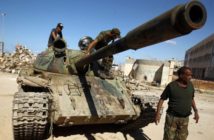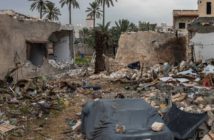بالعربيه
 via SyndiGate.info
via SyndiGate.info
The growth outlook for the Mena region is vulnerable to a combination of domestic and global risks
Arab Spring continues to affect economic growth in the Middle East and North Africa (Mena) as the region’s gross domestic product is projected to slow to 3.4 per cent in 2013 from 3.8 per cent in 2012 and then to rise to 3.9 per cent in 2014 and 4.3 per cent in 2015, a latest World Bank report says.
The projections made by the World Bank’s half-yearly report — Global Economic Prospects 2013 — released today, is based on its assumption of “an easing of the current uncertainty and domestic unrest, a strengthening of tourism, and a recovery of the region’s exports as global demand continues to firm”.
However, the growth outlook for the Mena region is vulnerable to a combination of domestic and global risks.
“Growth in the Mena region continues to be affected by political uncertainty and unrest in several countries,” the report says. “Other risks include the possibility of reforms aimed at improving fiscal sustainability, in particular those involving reduction of subsidies and fuel price increases, going off track or being reversed,” it said.
Four years after the onset of the global financial crisis, the world economy remains fragile and growth in high-income countries is weak. Developing countries need to focus on raising thegrowth potential of their economies, while strengthening buffers to deal with risks from the Euro Area and fiscal policy in the United States
“The economic recovery remains fragile and uncertain, clouding the prospect for rapid improvement and a return to more robust economic growth,” World Bank President Jim Yong Kim, said on the report. “Developing countries have remained remarkably resilient thus far. But we can’t wait for a return to growth in the high-income countries, so we have to continue to support developing countries in making investments in infrastructure, in health, in education. This will set the stage for the stronger growth that we know that they can achieve in the future.”
Another external risk for the Mena countries stems from the possibility of a sharp fall in crude oil prices.
“A sharp fall in international crude oil prices resulting from weaker than projected global economic growth, a protracted fiscal impasse in the US, or other unforeseen events, would benefit the fiscal and current account positions of oil importers, while hurting oil exporters, in particular those with relatively weak fiscal and reserve buffers,” it says.
M.R. Raghu, head of Research at Kuwait Finance Centre, says, “The capital infusion by the GCC governments, low interest rates, accommodative monetary policy, have all helped the region combat the crisis and witnessed reasonable economic growth in 2012.
“The economic diversification has supported some of the countries to sustain the strong external headwinds. As we move in to 2013, based on our analysis, we believe the GCC countries are still placed in a comfortable position as against the rest of the world.”
Conversely, a rise in crude oil prices, for instance resulting from intensification of geopolitical tensions along the Strait of Hormuz, would put pressure on the fiscal and external balances of Mena oil importers.
The World Bank has lowered its global GDP growth estimates to 2.3 per cent in 2012, compared with last June’s expectation of 2.5 per cent. Growth is expected to remain broadly unchanged at 2.4 per cent growth in 2013, before gradually strengthening to 3.1 per cent in 2014 and 3.41 per cent in 2015, it said.
“From hopes for a U-shaped recovery, through a W-shaped one, the prognosis for global growth is getting alphabetically challenged. With governments in high-income countries struggling to make fiscal policies more sustainable, developing countries should resist trying to anticipate every fluctuation in developed countries and, instead, ensure that their fiscal and monetary policies are robust and responsive to domestic conditions,” said Kaushik Basu, Senior Vice President and Chief Economist at The World Bank.
Optional
Jan Amrit Poser, Head of Research and Chief Economist at Bank Sarasin, says, “After the cyclical peak in the second quarter of 2013, we expect a renewed global economic slowdown until the end of the year. Keynes‘ “paradox of thrift” will therefore become the focus of discussion towards the end of 2013.”
In the Mena region, Iraq’s economy will remain buoyant with growth projected at 13.5 per cent in 2013 before moderating to 8.5 per cent in 2015; Libya’s growth is forecast to moderate to 7.6 per cent in 2013, easing to 5.1 per cent in 2015; while Algeria’s growth is projected to firm to 4.3 per cent by 2015. Iran’s growth is forecast at 0.6 per cent in 2013, rising to a modest 2.8 per cent in 2015, while growth in Lebanon is forecast at 2.8 per cent in 2013, firming to 4.0 per cent in 2015.
.






